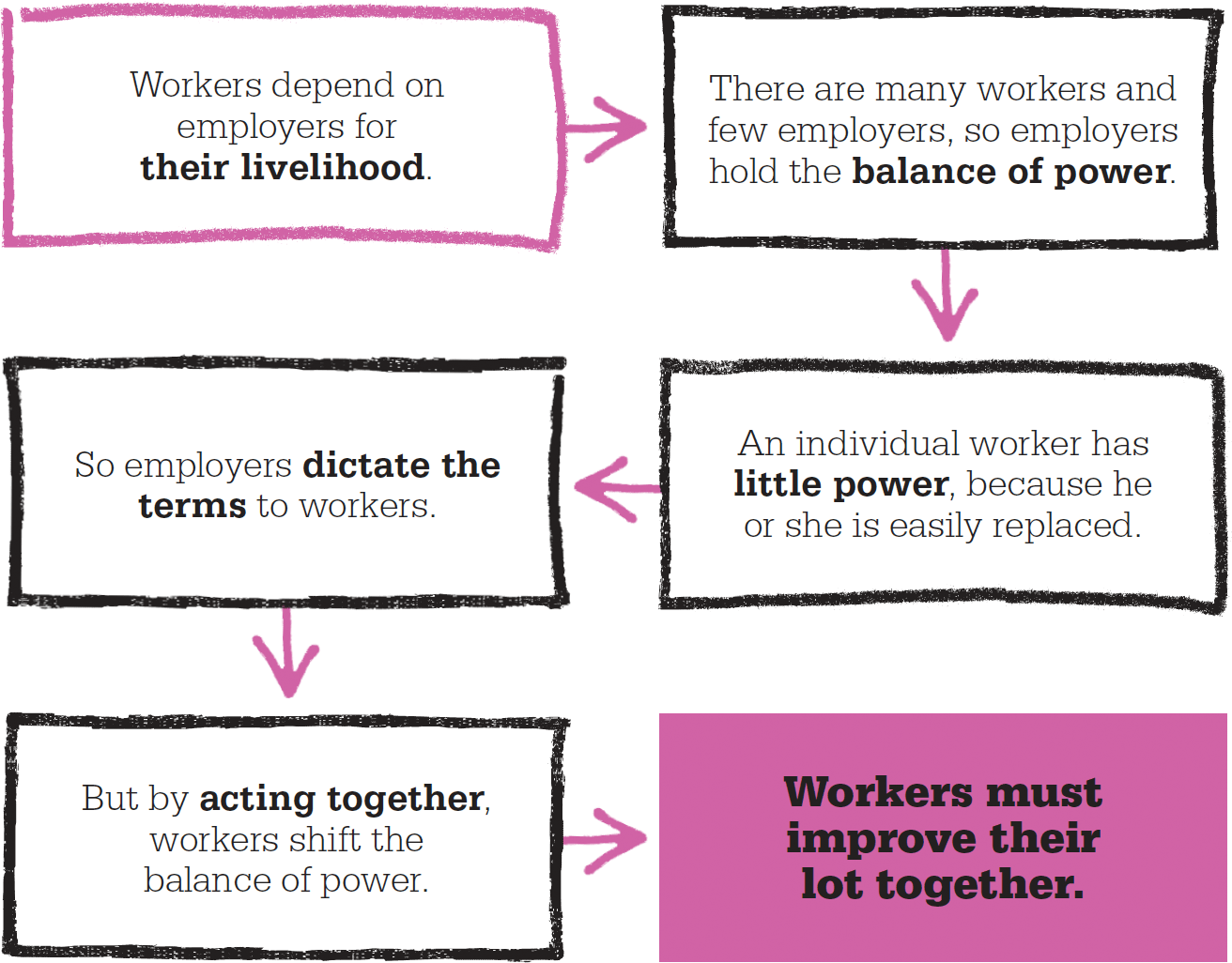

Society and the economy
Beatrice Webb (1858–1943)
1793 Friendly societies, an early kind of union, are given legal recognition in the UK.
1834 Workers in the US and Europe begin to unite in national organizations.
1870s Union power in France and Germany becomes firmly allied to socialist movements.
1920s and 30s Trade unions fight for workers’ rights during the Great Depression.
1955 US unions unite under a single umbrella: the AFL–CIO.
1980s Union membership and collective bargaining begins to decline in the face of privatized public services and measures by right-wing governments to curb union power.
The term “collective bargaining” was coined by British socialist reformer Beatrice Webb in 1891 to describe the process by which workers organize into unions, which negotiate pay and conditions with employers on the workers’ behalf. Webb and her husband, Sidney, campaigned against poverty, and their books brought about change at government level. In 1894, they published History of Trade Unionism, documenting the rise of the unions during the Industrial Revolution in Britain, when large numbers of workers were thrown together in the new factories. Conditions were harsh, job security almost non-existent, and wages often close to the breadline. The Combination Acts of 1799 and 1800 outlawed trade unions, and any worker who combined with another to gain a wage increase or a decrease in hours was sentenced to three months in jail. After the acts were repealed in 1824, trade unions formed rapidly, especially in the textile industry. A series of strikes led to a new law, limiting union rights to meetings for collective bargaining purposes.

"If a group of workmen concert together, and send representatives to conduct the bargaining on behalf of the whole body, the position is at once changed."
Beatrice Webb, Sidney Webb
As union membership in Europe increased throughout the 19th century, a struggle developed between those who saw unions as following in the tradition of crafts guilds, negotiating for better working conditions for their members, and those who saw unions as the vanguard of a revolution, fighting for a better world for all working people.
Collective bargaining was widely adopted because it works for employers as well as workers. It dramatically simplifies the process of agreeing to conditions because one agreement can often be applied industrywide.
However, since the 1980s trade unions and the power of collective bargaining have shrunk dramatically. US economist Milton Friedman has argued that unionization gives higher wages for union members at the expense of jobs and depresses wages in industries that are not unionized. Perhaps for this reason or more political ones, governments have often sought to curtail union power by outlawing sympathetic strikes.
The globalization of production has also isolated groups of workers within countries. The terms under which people work on a global product are often locally determined between workers and the company, rather than set industrywide across the whole country.

Public sector workers demonstrate in Madrid, Spain, in 2010 to protest against job cuts. Today, trade unions are stronger in the public sector than the private sector in most countries.

Born in Gloucestershire, UK, in 1858, Beatrice Webb was the child of a radical member of parliament. She grew up with a keen interest in social questions and became fascinated in the structural problems underlying poverty. In 1891, she met her lifelong partner, Sidney Webb, and the pair became central to the British Labour movement. They formulated the idea of “the national minimum”—a minimum level of wages and quality of life below which a worker could not be allowed to fall. They also founded the London School of Economics and the magazine The New Statesman. The Webbs helped to shape the trade union movement. They created a blueprint for the UK’s National Health Service and welfare systems around the world. Beatrice Webb died in 1943.
1894 History of Trade Unionism (with Sidney Webb)
1919 The Wages of Men and Women
1923 The Decay of Capitalist Civilization